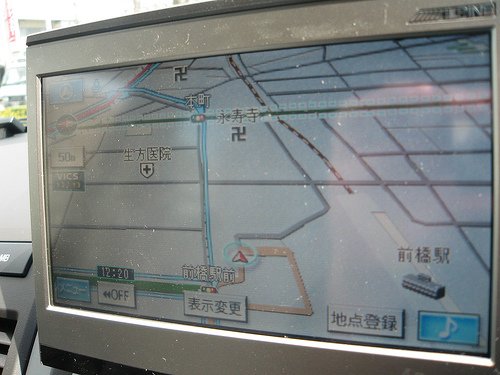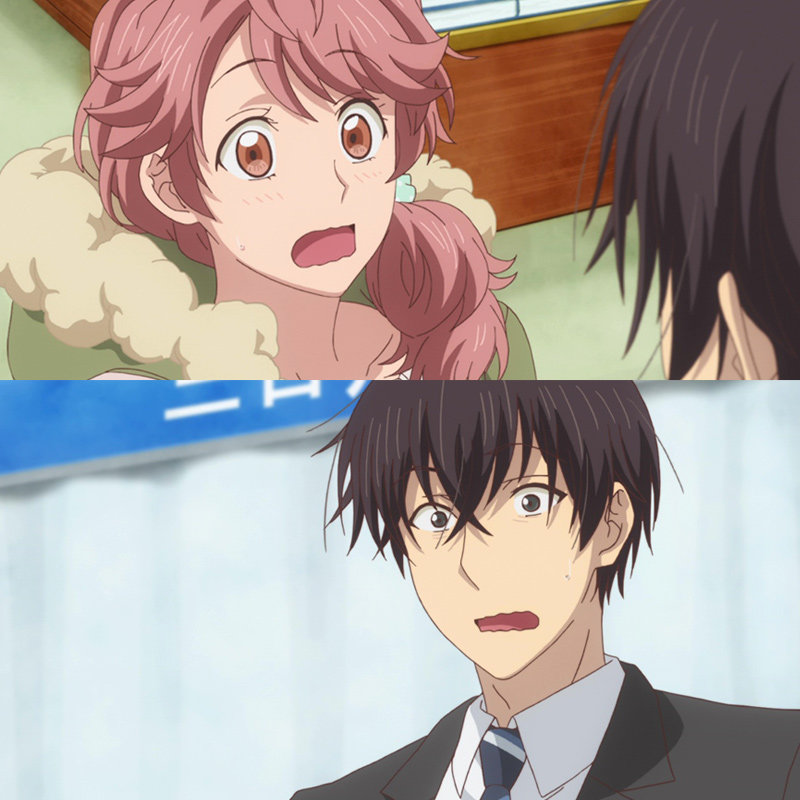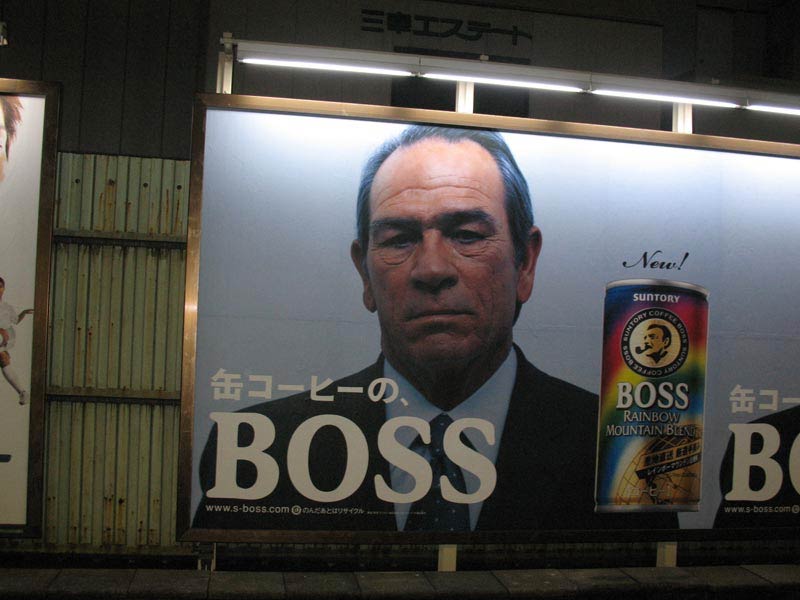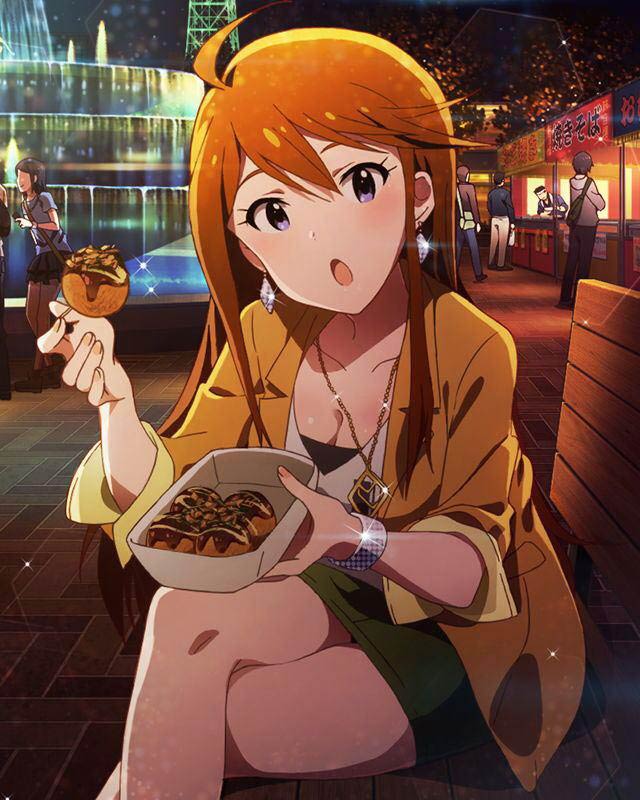When you come to a place like Japan, it’s always best to check your cultural preconceptions at the door and keep an open mind, since you’re sure to encounter things that don’t mesh with your “cultural reality.” We like driving around with our handy Alpine Navi, or GPS car navigator, which is nice to have if you find yourself lost or get the sudden urge to find the nearest sushi restaurant. The clever map shows small and large roads, indicates traffic jams, and marks hospitals, schools and convenience stores clearly. It also shows the many Buddhist temples that dot Japan with the universal icon, the swastika. Seeing swastikas on maps does take some getting used to, but in reality the icon is thousands of years old, used since prehistoric times and found in ancient Rome, Persia, and throughout the Hindu and Buddhist world today (in China the symbol denotes vegetarian food). In the end, encountering these little differences in culture is good for everyone since it makes us understand the world better.

Since the Meiji Restoration of 1868, the official capital of Japan has been Tokyo, a name which means “East Capital” in homage to the Chinese cities of Beijing (“North Capital”) and Nanjing (“South Capital”). It’s a sprawling mesh of trains, roads, and concrete, with a population of 12 million, a number which rises significantly during the day as people come in from the surrounding regions to work. Tokyo isn’t a city at all, but a prefecture unto itself, with 23 “special wards” as well as cities, towns and (don’t ask me why) villages established inside its borders, like New York’s boroughs carried to a bizarre extreme. Tokyo is so massive that it spills out of its borders, creating one unbroken urban continuum around it. Japan’s capital is bordered by Yokohama to the south, home the best Chinese food in the country; Yamanashi Pref. to the West, a nice place to take in Mt. Fuji; Chiba Pref. to the East, home of Tokyo Disneyland and the setting of the seminal cyberpunk novel Neuromancer; and poor Saitama Pref. to the North. For some reason, it seems that regions that live in the shadow of famous cities can get negative reputations, like New Jersey or the Orange County area of California (“living behind the Orange Curtain” a friend from Garden Grove used to say to me). Poor half-rural, half-urban Saitama has certainly been cursed in this way, so much so that the main slang word meaning “dorky” or “uncool” in Japan — dasai, pronounced dah-SAI — comes from this prefecture’s name.
Yesterday was the funeral of Takuya Fujioka, the actor who played the grandfather on the long-running Japanese drama “Wataru Seken wa Oni Bakari” (translatable as “Nothing but Devils in the World” although the official English title seems to be “Making It Through”), who passed away at the age of 76 last week. One of the most popular shows on TV today, the drama follows the (usually unhappy) life and times of the Okakura family, who run a ramen shop, focusing on the five grown Okakura daughters. The plots are absolutely mundane, dealing with issues like wives not getting along with their mothers-in-law, headstrong kids who refuse to go to school or show respect to their elders, and so on. I positively hate this twisted Japanese take on the Brady Bunch, since just crossing through a room with the show on TV is enough to trap you for the next hour, like a fly in molasses. The show has been running off and on for fifteen years, a rarity the J-Drama scene, where series are usually limited to 15 weekly episodes with a climactic resolution at the end.















